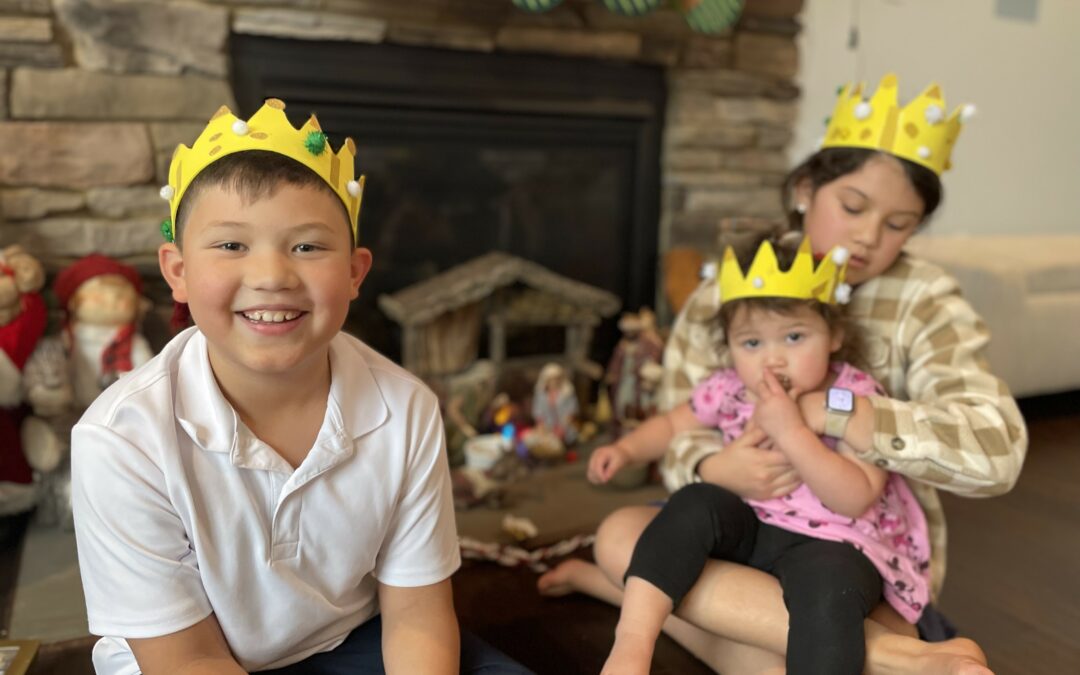
6 January: the Epiphany of the Lord
6 January: The Epiphany of the Lord. The Solemnity of the Epiphany is celebrated either on January 6 or on the Sunday between January 2 and 8. This feast day marks the twelfth day of Christmas and celebrates the young Messiah being revealed as the light of the nations. In the Latin Rite of the Church, Epiphany (comes from the Greek, meaning “revelation from above”) celebrates the revelation that Jesus is the Son of God. It focuses primarily on this revelation to the Magi; but also in the baptism in the Jordan and the wedding at Cana. The Early Church celebrated the advent of Christ by commemorating the Nativity, Visitation of the Magi, Baptism of Christ and the Wedding of Cana all in one feast of the Epiphany. At the Council of Tours in 567, the Church set Christmas day and Epiphany as separate feasts, and named the twelve days between them as the Christmas season. The traditions surrounding the Feast of the Epiphany point to the Magi, the first gentiles to meet Christ. The Bible does not list the names or the number of the wise men, but we do know they were intelligent, wealthy, and brave. The gifts they brought to the Christ-child (gold, frankincense and myrrh) were gifts that point not only to Christ’s divinity and his revelation to the Magi as the King of Kings, but also to his crucifixion. Giving herbs traditionally used for burial was a foreshadowing of what is to come.
There are many Epiphany traditions around the world. In Italy, La Befana brings sweets and presents to children not on Christmas, but on Epiphany. Children in many parts of Latin America, the Philippines, Portugal, and Spain also receive their presents on “Three Kings Day” (children leave shoes out on the eve of Epiphany to receive treats and money from the Kings, similar to St. Nick’s Day). In Ireland, Catholics celebrate “Women’s Christmas” – women rest from housework and cleaning and celebrate with a special meal. In Germany, groups of young people called Sternsinger (Star Singers) travel door to door dressed as the three Wiseman, with the leader carrying a star. Germans eat a golden pastry ring filled with orange and spice representing gold, frankincense and myrrh. They decorate Christmas trees with cookies and sweets that are to be enjoyed on Epiphany. In England, the night before Epiphany is known as Twelfth Night. It is a time for plays, practical jokes, Twelfth Night Cake, and wassailing. The Yule Log was lit on Christmas day and remained burning until Epiphany. For Christians, the symbolism of the Yule log is that it represented keeping the stable warm for baby Jesus. These days, log shaped chocolate cakes are often eaten in place of the Yule logs.
Ideas for celebrating in your home:
- It is traditional to celebrate Epiphany with a Kings Cake: a sweet cake that contains an object like a plastic figure, bean or nut. If you get the bean, you are King or Queen for the day! Recipe here.
- Nativity scene: the infant Jesus could be given a small gold crown or regal robe. The figures of the wise men should have reached the manger by now!
- It is traditional to bless your home on Epiphany using blessed chalk (given out at church). Over the door is inscribed: 20 + C + M + B + 21. The initials CMB stand for the names of the Wisemen or for “Christus Mansionem Benedicat” which means “May Christ bless this house”
- Put on a play: celebrate the three kings by asking children to act out the story of the Magi coming to visit the newborn king. Bedsheets and tablecloths make great robes and crowns can be homemade (tip: Burger King is happy to give out crowns to customers!). Children can carry the three gifts to the Christ-child in the manger: click here for how to make edible “gifts” that are symbolic of the gold, frankincense and myrrh. Be sure to sing “We Three Kings”!
- Visit the Catholic Icing website here for more Epiphany feast day ideas.
Recent Comments